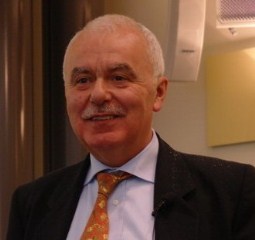Livio Baldi, Micron Semiconductor, Italy

Short biography: Ing. Livio Baldi graduated in Electronic Engineering in 1973 at the University of Pavia. In 1974 he joined SGS-ATES (now STMicroelectronics), in the Central R&D of Agrate Brianza. He has been responsible for the development of CMOS processes for EEPROM memories and multifunction logic. In 1999 he moved to lead the NVM Design Platform Development Group. In 2001he was put in charge of coordinating the participation of ST Italy in cooperation research projects, representing it in the MEDEA+ Steering Group- Technology and in the Support Group of the European Technology Platform (ENIAC). He has acted as consultant for the Commission in the definition of Framework Programmes and he is member of the Expert Advisory Group for Theme 4 (Nanoscience, Materials and Production Technology) of FP7. From March 31st, 2008 he has moved to Numonyx, the new ST-Intel joint venture on Flash memories, in charge of External Relations and Funding in Central R&D, and representing it in AENEAS and CATRENE. From 2010, following the acquisition of Nymonyx by Micron Technology, he fills the same position in Micron Semiconductor Italia. He holds 33 US patents, 17 European patents, and is author of more than 70 papers and communications to conferences.
Title: Emerging Memories
Abstract: Solid state memories are a critical element of any computing and control system, and are becoming the prevailing tool for information storage. The variety of functions covered by memory devices has given rise to different memory typologies, all based on the principle of charge storage. However, after almost 50 years of continuous evolution, all these types of memories seem to have reached their technological limits, and a drastic change of approach is required. Emerging memories are based on different storage mechanisms, and no clear winner has emerged yet, even if some broad trends can be identified. The main families of memories will be discussed with reference to their performance trade-offs and scalability. At the moment the large variety of alternatives is preventing the focusing of investments needed to reach the same maturity as consolidate memory types, but niche applications can be indentified that could push the technological development. Even if none of the proposed approaches seem yet really capable to fulfill the role of "unified memory", a possible future scenario will see combinations of different technologies to built specialized memory systems.